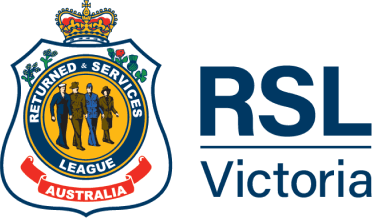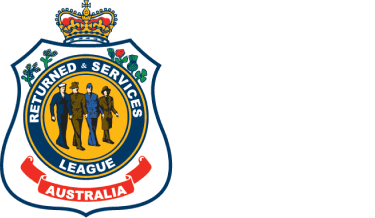Photos: Australian War Memorial and the Australian College of Nursing
In a rare interview in 1993, Lieutenant Colonel Vivian Bullwinkel AO, MBE, ARRC, ED recalled the chilling moment that she realised her fate and that of twenty-one brave Australian Army nurses, at the hands of Japanese soldiers.
“We just looked at one another and said, ‘they’re not taking prisoners’,” she said, not a hint of anger or bitterness in her voice, “we seemed to accept the fact that ‘we are on the wrong side of the fence at the moment this is our fate’.”
It was February 16, 1942 and despite being in full nursing uniform, red cross emblems proudly displayed on their sleeves, no mercy was shown to the Australian women who’d managed to struggle ashore to the Japanese-occupied Banka Island near Sumatra, after their ship the SS Vyner Brooke was bombed while fleeing the fall of Singapore.
The Japanese soldiers marched the women into the sea; a now famous rallying cry from Matron Irene Drummond,
"Chin up girls! I’m proud of you all and I love you"
Matron Irene Drummond
the last words they heard before they were machine-gunned from behind.
Miraculously, Sister Bullwinkel, 25, survived.
"I was towards the end of the line and the bullet that hit me struck me at the waist and just went straight through,” she later told the War Crimes Tribunal in Tokyo in 1946 recalling how she played dead in the water before being washed ashore, "all was quiet and then I got up, the Japanese had all disappeared."
It has been 80 years since the Banka Island massacre, widely acknowledged as one of the most barbaric war crimes committed. Now a campaign is underway to properly recognise and honour Vivian Bullwinkel and the brave nurses who died in service.
The Australian College of Nursing (ANC) is working with the Australian War Memorial (AWM) to create a significant sculpture for display in the grounds of the war memorial.
“Lieutenant Colonel Vivian Bullwinkel was a great Australian, a great leader, a great woman and a proud nurse and it is fitting she is immortalised at the Australian War Memorial,” says ACN Chief Executive Adjunct Professor Kylie Ward, FACN.
"Nurses represent the best of humanity. Everyone who goes into the profession of nursing knows it’s a life of service and sacrifice."
ACN Chief Executive Adjunct Professor Kylie Ward, FACN
"I just felt that if our friends were prepared to go and fight for our country then they deserved the best care I could give them and I believed I was able to help providing that care for them"
Vivian Bullwinkel
She was posted to the 13th Australian General Hospital in Singapore but when the fall of the city was imminent, she was among the last group of 300 people, including civilians and nurses to sail just before the city surrendered in February 1942. Two days later, a Japanese bomber spotted the Vyner Brooke in the Bangka Strait and it was attacked and sunk.
Many were killed instantly but those who survived clung to wreckage and some reached land where they were captured by the Japanese. The Australian nurses came ashore with 25 British soldiers who were separated from the women and marched around the headland where they were shot.
The women too suffered horrific deaths with Bullwinkel later describing how she was floating in a sea of her colleague’s blood, pretending to be dead.
Soon after struggling ashore, Bullwinkel found badly wounded British soldier Private George Kingsley and they hid in the jungle where she cared for him, tending to a bullet wound to his stomach, but
after twelve days they surrendered, realising they may otherwise starve to death.
Kingsley died of his injuries a few days later.
Bullwinkel was held as a prisoner of war at the notorious Palemberg camp for a further three years, always caring for the sick and injured.
After liberation, she made it her life’s mission to seek justice for her fallen sisters and honour their service and sacrifice. Upon her return to Australia, she visited every family to tell them of their loved one’s service and bravery and she lived her life in tribute to friends who would never return.
During the Tokyo War Crime trial, she detailed the horrific final moments of the brave women’s lives, but she was asked to conceal one piece of evidence that was deemed too distressing to the public. However, in her later years she revealed to journalist Tess Lawrence that the women were raped before they were murdered, claims supported by evidence from historian Lynette Silver and biographer Barbara Angell.
After the war Sister Bullwinkel, who married in 1977 and became Vivian Statham continued her career in nursing. She dedicated her life to helping others, becoming the Director of Nursing at the Fairfield Infectious Diseases hospital, devoting herself to raising funds for a nurses’ memorial and serving on the Council of the Australian War Memorial. In 1975, at a day's notice, she led a team of nurses to Vietnam to recover 80 orphaned babies and children and bring them back to adoptive homes in Australia.
Then in 1993, she undertook one final emotional journey returning to Banka Island to dedicate a plaque to her comrades who had been killed.
She died on July 3, 2000 of a suspected heart attack, aged 84.
Lieutenant Colonel Bullwinkel’s wartime diary has been donated to the Australian War Memorial, which also has her uniform with bullet hole intact, on display.
Now the Australian War Memorial has offered $50,000 towards the design and development of the Vivian Bullwinkel memorial which they hope, offers a place to remember, reflect and acknowledge the contribution of Bullwinkel and the many other nurses who served.
In addition to the sculpture, to mark the 80th anniversary of the massacre, the Australian Nursing College is also supporting scholarships in nursing leadership in honour of Vivian and her colleagues.
“Vivian was a wonderful Australian,” says Wing Commander (Retired) Sharon Bown, RN FACN GAICD, Council Member to the Australian War Memorial.
"Vivian was a great inspiration to me and its fitting to have her immortalised in a sculpture that represents all Australian nurses."
Wing Commander (Retired) Sharon Bown, RN FACN GAICD, Council Member to the Australian War Memorial
“We want future generations when they wander these magnificent gardens at the Australian War Memorial. I want kids to stop and ask who was Vivian Bullwinkel, what did she do, and I know when they hear her story, they’ll be inspired by it,” says Matt Anderson PSM, Director, Australian War Memorial.

